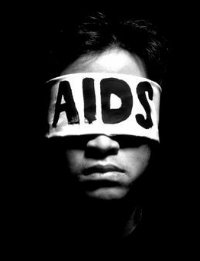Poverty is perhaps the most important factor in whether inner-city heterosexuals are infected with the AIDS virus, according to the first government study of its kind.
The study, released Monday, suggests that HIV is epidemic in certain poverty-stricken urban neighborhoods. And, more significantly, poor heterosexuals in those neighborhoods were twice as likely to be infected as heterosexuals who lived in the same community but had more money.
Federal scientists found that race was not a factor — there were no significant differences between blacks, whites or Hispanics.
Health officials have long believed poverty drives HIV epidemics, but there have been few studies to back that up. Some research actually contradicts that belief: Studies in Tanzania, Kenya and some other African countries actually found that wealthy people were more likely to be infected than the poor.
“In the United States, we haven’t have a history of looking in depth at the association between poverty and HIV,” said Dr. Jonathan Mermin, director of HIV/AIDS Prevention for the Centers for Disease Control and Prevention. Mermin oversees the CDC team that did the new study.
More often, studies have focused on the race of HIV patients, their sexual orientation, or whether or not they use intravenous drugs.
The CDC report was released at the international AIDS conference in Vienna.
The study involved a survey in 2006 and 2007 of 9,000 heterosexual adults, ages 18 to 50. They answered questions on a computer about their income, condom use and other details and were given HIV tests.
The research was done in high-poverty neighborhoods in 23 U.S. cities. It focused on heterosexuals who don’t use intravenous drugs; that group accounts for about 28 percent of Americans living with HIV. It did not involve gay or bisexual men, who have the highest rates of HIV in the United States.
The results: HIV was detected in 2.4 percent of the people who were living below the federal poverty line, which in 2007 was an annual income of roughly $10,000 or less for an individual. The 2.4 percent translates to roughly 1 in 42 people.
In contrast, infections were found in 1.2 percent of people in the same neighborhoods who made more money than the federal poverty guideline. That’s 1 in 83 people.
Both rates were higher than the national average, which is 0.45 percent, or 1 in 222 people.
The results suggest that people in low-income neighborhoods are more likely to be infected because they live among more people who are infected. Perhaps more people in such neighborhoods have used illegal drugs or had other experiences that put them at higher risk, Mermin said.
“It’s epidemiological bad luck,” he said. He described the situation: “I’m in a community where when I meet a new (sexual) partner, the chance that they would have HIV is much higher than if I were wealthy and living in another geographical area.”
Officials need to start looking at the AIDS epidemic in a different light, said Dr. Carlos del Rio, who chairs global health studies at Emory University’s school of public health.
“You talk about ‘Can we decrease the HIV burden in the United States?’ I would say, ‘What can we do to decrease poverty in the United States?'” del Rio said.
He noted there are diseases that are more prevalent in certain racial groups, for genetic reasons. Sickle cell disease, which is most prevalent in blacks, is one example.
But there’s no clear biological reason why the infection rate is eight times higher in blacks than whites, and three times higher in Hispanics than whites. But understanding that blacks are disproportionately poor probably does explain why the rates are higher, del Rio said.
He was an author of a smaller, recent study that found that 60 percent of Atlanta’s HIV cases were located in a downtown area of the city with high proportions of blacks, IV drug users and people living in poverty.
An estimated 1 in 272 Americans is infected with HIV, according to 2006 estimates. In other terms, more than 1.1 million Americans are living with the AIDS virus. The number has grown since 2006, CDC officials believe.
Officials believe the annual number of new HIV infections has been hovering around 55,000 a year since the late 1990s.
More Resources:
The CDC’s HIV Web site: http://www.cdc.gov/hiv
XVIII International AIDS Conference: http://www.aids2010.org/

